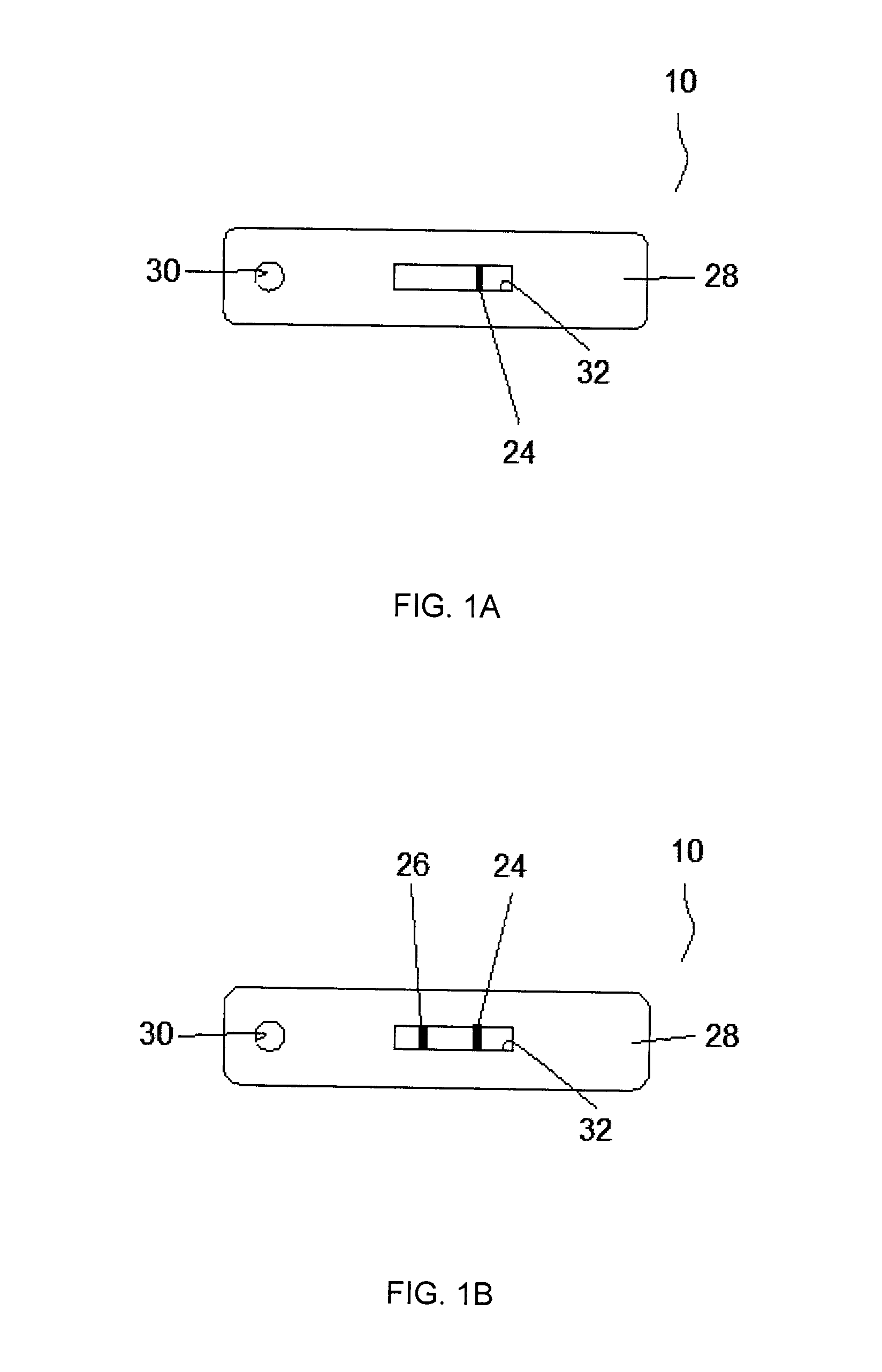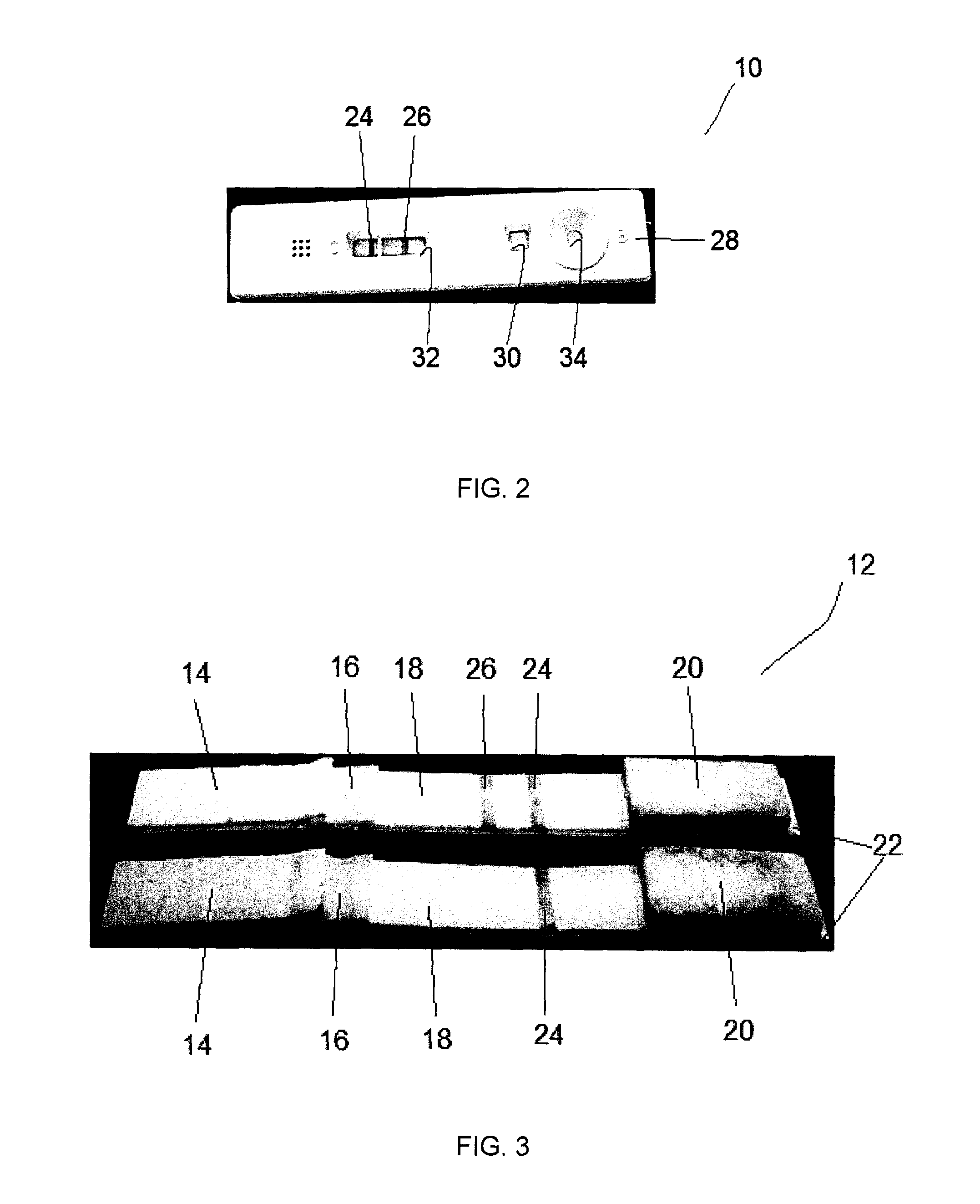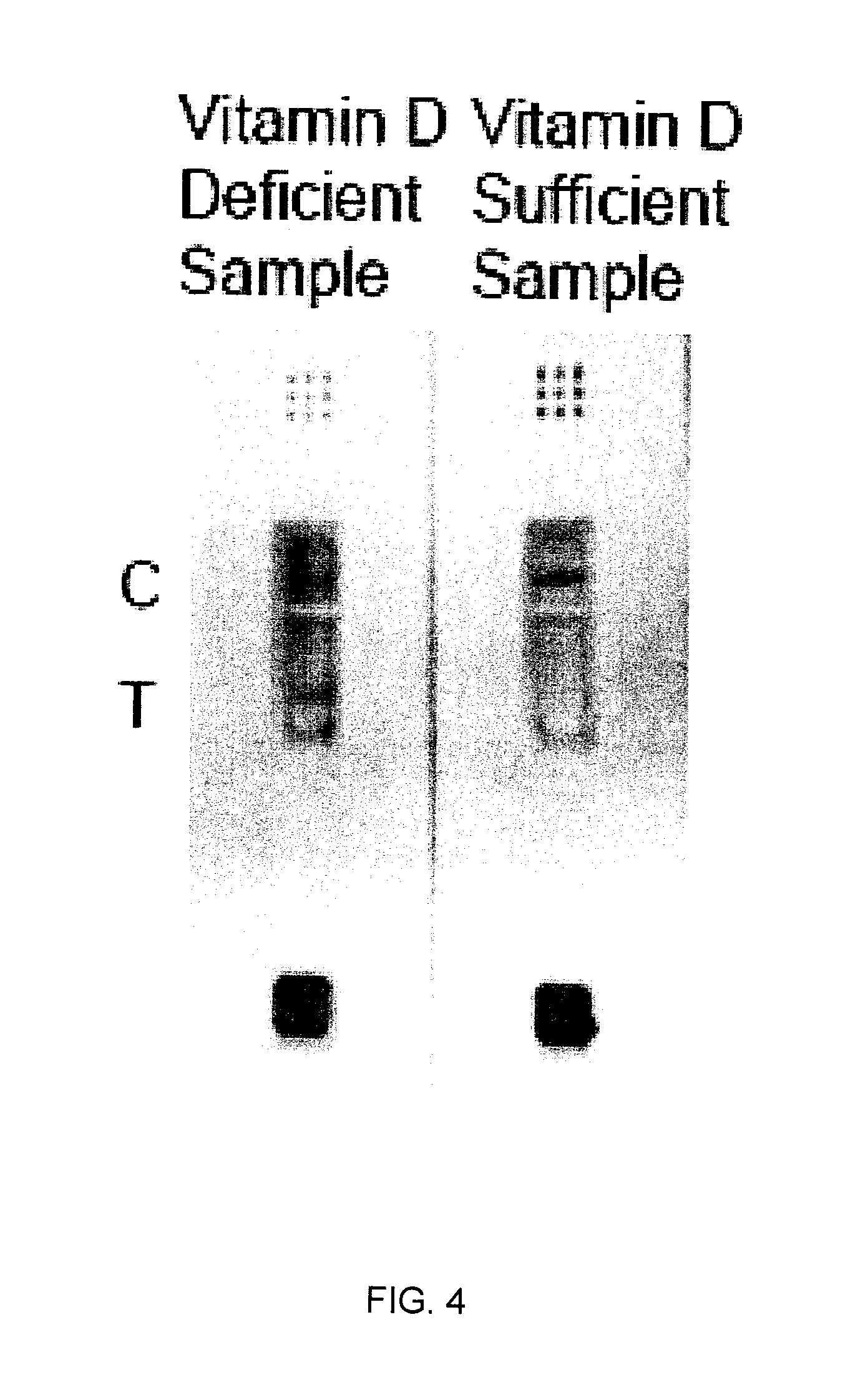Lateral flow immunoassay for detecting vitamins
a technology of immunoassay and vitamin, applied in the field of vitamin and lateral flow immunoassay, can solve the problems of limiting the absorption of vitamin d, insufficient nutritional intake of vitamin d, and affecting the conversion ra
- Summary
- Abstract
- Description
- Claims
- Application Information
AI Technical Summary
Benefits of technology
Problems solved by technology
Method used
Image
Examples
example 1
Detection of Vitamin D in a Fluid Sample
[0075]A lateral flow immunoassay was used to detect vitamin D3 in a fluid sample. Within the test strip, the detection membrane comprised nitrocellulose membrane immobilized with 25-hydroxy vitamin D3 conjugated to bovine serum albumin (BSA) at the test band. Anti-mouse IgG antibodies were immobilized at the control band. The particulate conjugate comprised monoclonal antibodies against 25-hydroxy vitamin D3 labelled with colloidal gold (40 nm).
[0076]Anti-vitamin D antibody was raised in mice by immunizing animals with purified antigen conjugated to keyhole limpet hemocyanin. Different clones were obtained after fusion and their activity was checked against 25-hydroxy vitamin D3. A clone specific for 25-hydroxy vitamin D3 was selected and further re-cloning was performed. The clone that showed the highest titer in the ELISA assay using 25-hydroxy vitamin D3 coated plate was selected. Cells were grown in cell culture medium and supernatant rich...
example 2
Assessment of the Analytical Performance of the Immunoassay
[0079]The immunoassay was evaluated by using 25-hydroxy vitamin D3 conjugated to bovine serum albumin (D-BSA) of known vitamin D concentration. 20 μL of known concentrations of D-BSA were applied on the test strip followed by 7 drops of chase buffer and the appearance of test and control lines was checked after 10 minutes. The assay was repeated to confirm the reproducibility of the results (Table 1).
TABLE 1Test Results1st Set2nd SetD-BSA SampleTestNo Test ControlTestNo TestControl(ng / ml)LineLineLineLineLineLine188 ✓✓✓✓125 ✓✓✓✓62✓✓✓✓4.7✓✓✓✓0✓✓✓✓
[0080]The test line appeared up to a vitamin D concentration of 4.7 ng / ml. There were no test lines at vitamin D concentrations of 62 ng / ml or greater. The results were consistent in both assays. The control line appeared in all the test strips, confirming the validity and proper performance of the assays. These results demonstrate that variations in vitamin D concentrations and the c...
example 3
Comparison of immunoassay to conventional assay
[0083]The immunoassay of the present invention yields qualitative results which are consistent with results obtained using a conventional quantitative 25-hydroxy vitamin D3 assay (LIAISON™ 25 OH Vitamin D TOTAL Assay, DiaSorin Canada Inc., Mississauga, ON, Canada). Table 3 compares the results obtained for the same samples using the two different assays.
TABLE 3Comparison of immunoassay to conventional vitamin D testQuantitativeTest results(Liaison ™,Qualitative Test results ofDiaSorin)immunoassay25(OH)test strip (Yes / No)Patient #Vit D nmol / LResultStrip ResultStrip Comment1125SufficientSufficientNo Test Line2113SufficientSufficientNo Test Line892SufficientSufficientNo Test Line980SufficientSufficientNo Test Line1074DeficientDeficientTest Line1158DeficientDeficientTest Line1235DeficientDeficientTest Line
[0084]FIG. 4 shows actual test results from the immunoassay of the present invention comparing vitamin D deficient and sufficient blood s...
PUM
| Property | Measurement | Unit |
|---|---|---|
| diameter size | aaaaa | aaaaa |
| diameter size | aaaaa | aaaaa |
| concentrations | aaaaa | aaaaa |
Abstract
Description
Claims
Application Information
 Login to View More
Login to View More - R&D
- Intellectual Property
- Life Sciences
- Materials
- Tech Scout
- Unparalleled Data Quality
- Higher Quality Content
- 60% Fewer Hallucinations
Browse by: Latest US Patents, China's latest patents, Technical Efficacy Thesaurus, Application Domain, Technology Topic, Popular Technical Reports.
© 2025 PatSnap. All rights reserved.Legal|Privacy policy|Modern Slavery Act Transparency Statement|Sitemap|About US| Contact US: help@patsnap.com



